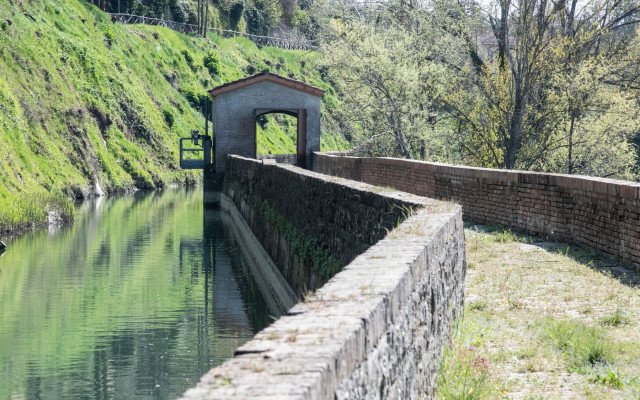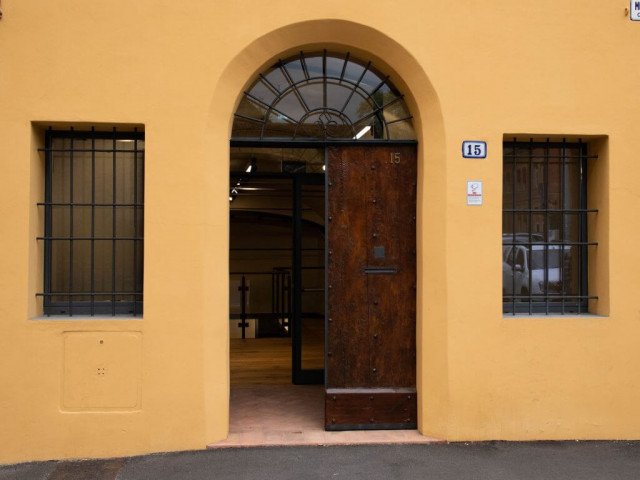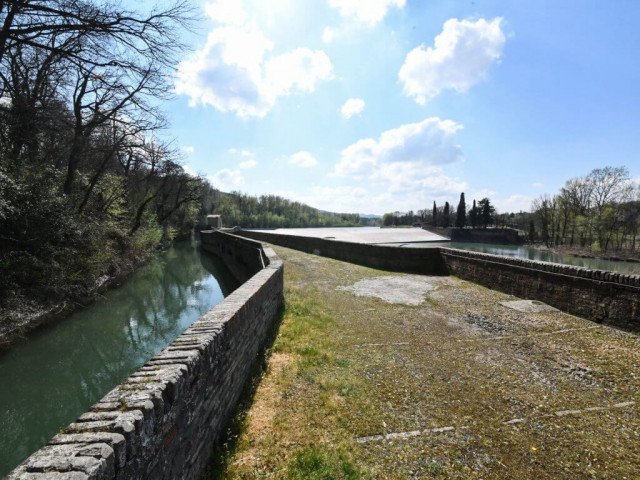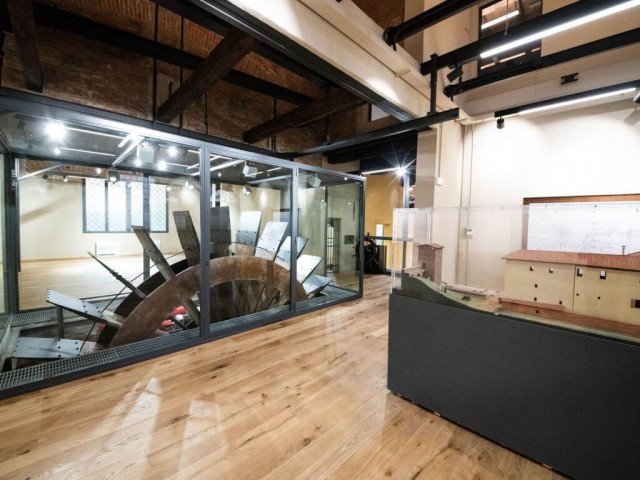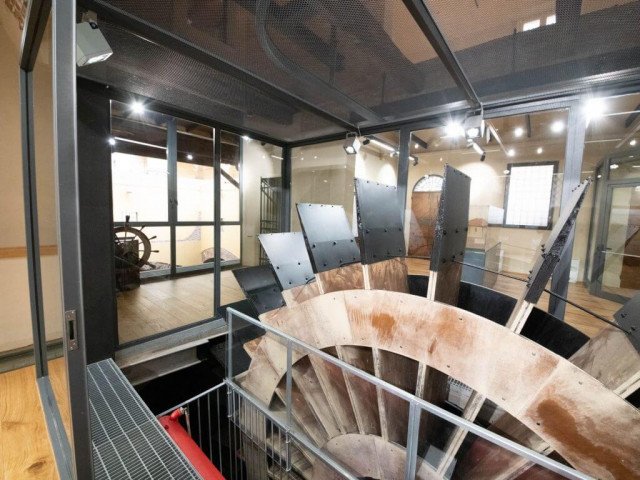The Opificio delle Acque (Water Factory) is located in Bologna and displays one of the last remaining historical hydraulis artefacts that operated for centuries in the historical centre of the city. It served as a tannery, grain mill, and hydroelectric power station. Opificio delle Acque is the headquarters of Canali di Bologna and hosts a Documentation and Educational Center related to the history of managing the Reno Canal, the water body that enters the city and once fed the river port, fed a river port, now unfortunately disappeared. Today the Opificio hosts exhibitions and educational initiatives recalling such a rich heritage.
The Opificio delle Acque – Documentary and Educational Centre is located in Bologna city center, inside a former tannery built straddling the Reno canal. The building currently houses the seat of Canali di Bologna, which gathers the Consortia of canals of Reno and Savena. These institutions are heirs of the ancient organizations that since the 13th century have governed over the artificial network of canals located in Bologna’s territory. The artificial system was realized to bring water to the medieval city of Bologna, which is located far away from natural watercourses.
In fact the River Reno and the Stream Savena are positioned at a distance of about 6 km from the city center. Since the 12th century water has been deviated from both watercourses in order to supply the city for industrial purposes, generating energy for the machinery that made Bologna one of the richest cities in Europe. The artificial water system nowadays has become the main element to preserve the hydro geological balance of Bologna’s area, preventing the risk of flooding and granting water even in drought periods. Canali di Bologna decided to use part of its headquarters for an educational and documentary center in order to raise awareness of this water heritage and to avoid forgetting that Bologna was, and still is, a city of water.
Inside the center the historical events of the former tannery are illustrated through the reconstruction of plants and machinery once used for the leather tanning process. In the central room a large water wheel has been reconstructed as it was in the 18th century, when it actioned a millstone that grinded gall and bark. In the same room a scale model of the building shows all the tools, the tanks and the materials helpful to the work phases. The underground floor houses traces and industrial artifacts telling the more recent history of the factory. At the end of the 18th century the Rizzoli, Bologna’s Orthopedic Institute, asked for the right to install two turbines to generate power to fuel the very first X-ray rooms that operated in Italy, the plant worked until year 1926. The former seats of the turbines are visible on the paving through round glass slabs. They currently stand as a rare evidence of our industrial heritage.
History
Since 1580, the first concession to two partners to build a brick walled house above the Reno canal to be used as a hydraulic building is reported, through the construction of a large stone vault erected astride the canal, near its entry point in the city where the iron grate (grada) was placed outside the walls, still visible on viale Vicini. The vault that covered a short stretch of the canal appears already represented in the large Perspective Plan of Bologna, frescoed on commission by Pope Gregory XIII (1575) in the Sala Bologna in the Vatican.
Only in 1681 the Opificio della Grada took shape, following the request of the entrepreneur Giovanni Battista Mengarelli to be able to build a Tannery (Pellacaneria) - with the right to install "a paddle wheel on the surface of the water without restricting the channel in any way".
Documents indicate that in 1683 the Tannery was already built; some gates were active inside it to raise the water level in order to feed a vertical paddle wheel intended to grind and pulverize the bark of some plants, the gall nuts (Quercus infectoria), and the acorns of the Vallonea oak, from which the tannins necessary for the tanning of the skins were extracted.
In the Tannery the entire tanning process was carried out which led to transforming the skins of different types of animals into a high quality product, ready for the subsequent processing of the leathers destined to make animal harnesses, wall and furniture coverings, book bindings, footwear and clothing items, cases for objects. The tanning involved three successive operations: the first, called soaking, was used to restore the skins, dried with salting, to their original state by immersion in milk of lime (calcium hydrate) to remove animal hair. The maceration phase followed, aimed at obtaining softening, while the third phase consisted of the actual tanning, with immersion of the hides in tanks full of tannic liquids of different concentrations. Finally, the leathers were air dried in the large roof terrace, specially built on the top floor of the building.
Temporary exhibitions
HIDDEN CANALS in Bologna in the Twentieth century (10th of October 2020 – 27th of March 2021)
“HIDDEN CANALS in Bologna in the twentieth century” is an exhibition dedicated to the transformations of the north-western area of Bologna, for centuries characterized by uncovered canals and factories that used water for various production activities.
Maria Cecilia Ugolini and Stefano Pezzoli, exhibition’s curators, have collected more than 80 pictures preserved in the photographic collections of the Cineteca di Bologna, the Municipal Library of the Archiginnasio, the Art and History Collections of the Cassa di Risparmio Foundation in Bologna, and in some private archives, in order to reconstruct the most significant phases of the interventions to cover urban canals during the twentieth century.
The exhibition itinerary, divided into two sections in chronological order, recomposed the stages followed by the Municipality of Bologna to implement the Town Plan of 1889 and the urban transformations which, before and after the last war, hid much of the hydraulic system of the Reno Canal.
Visit the Exhibition webpage














